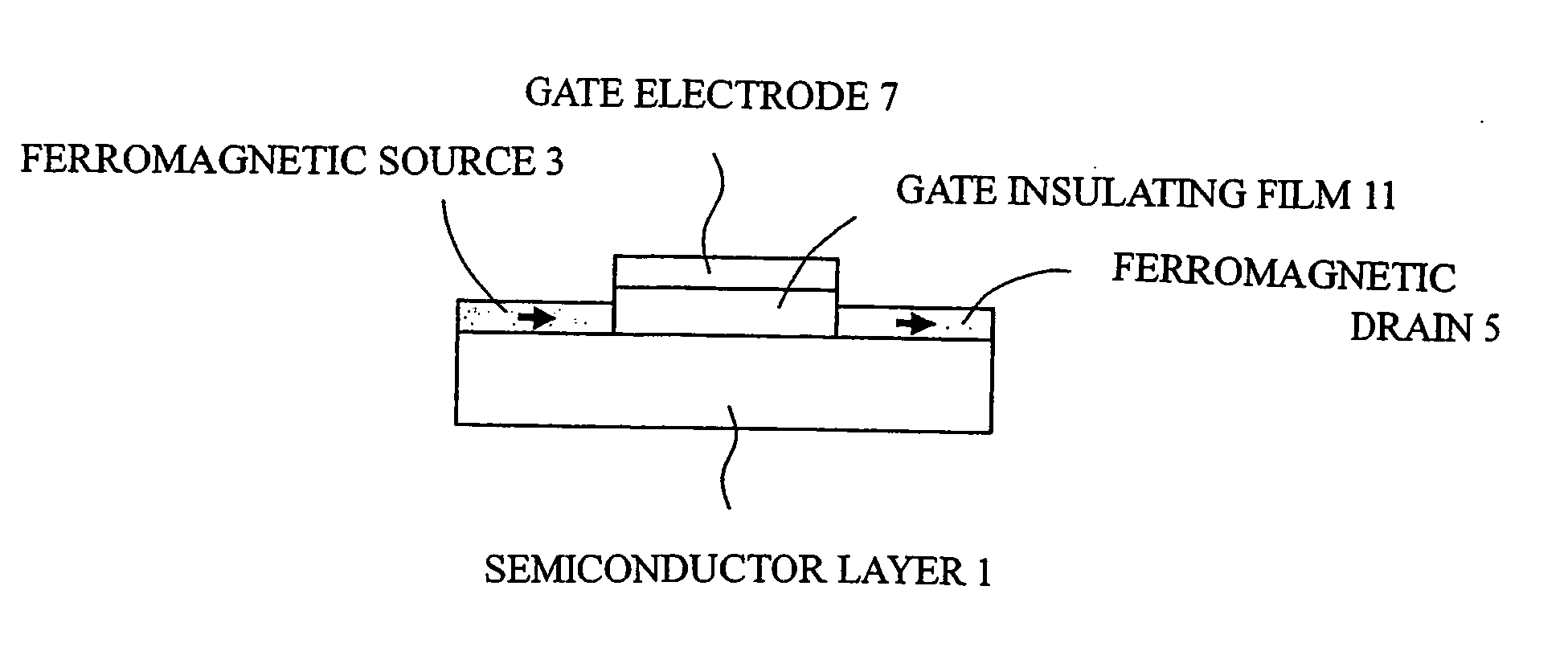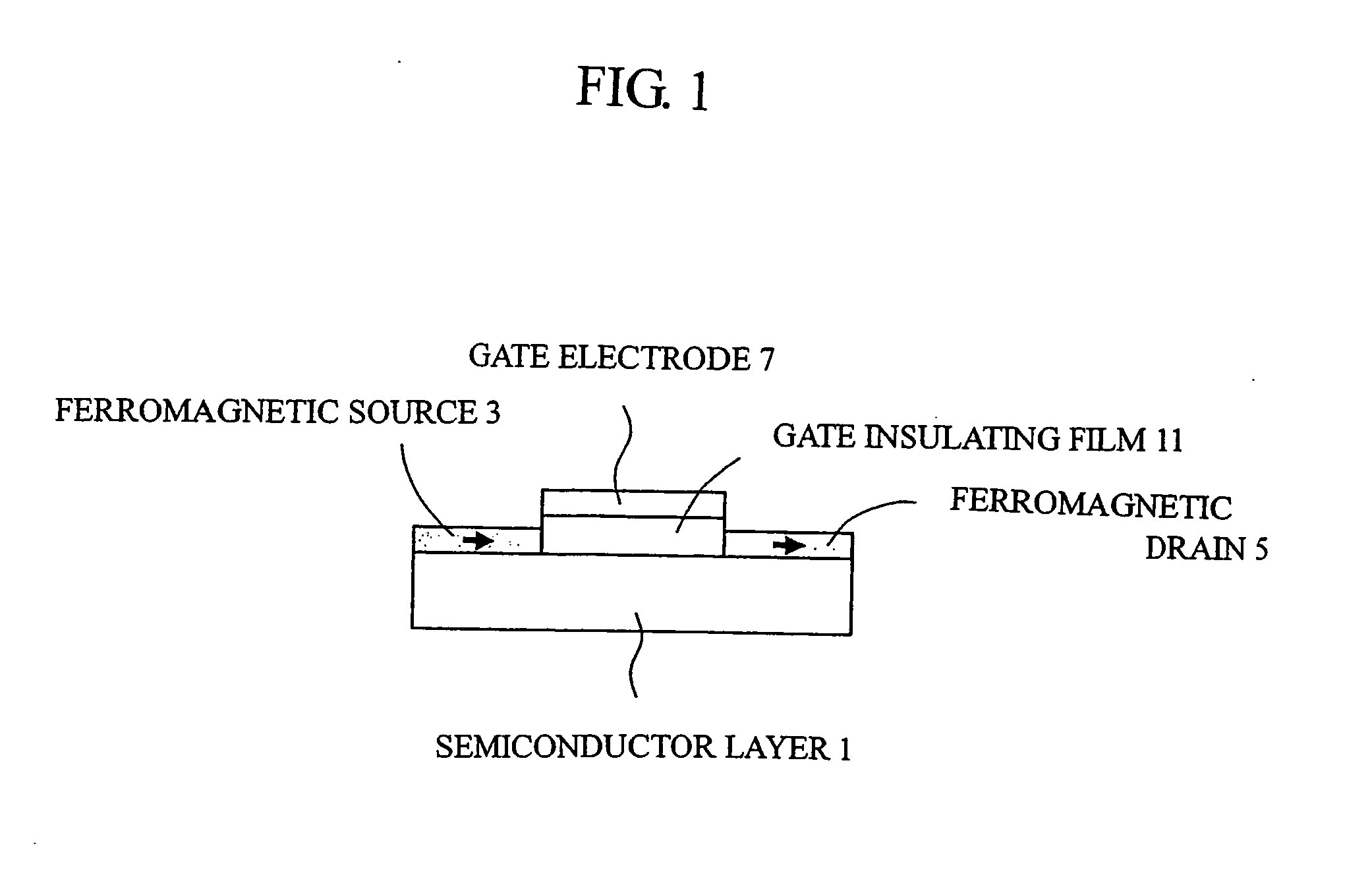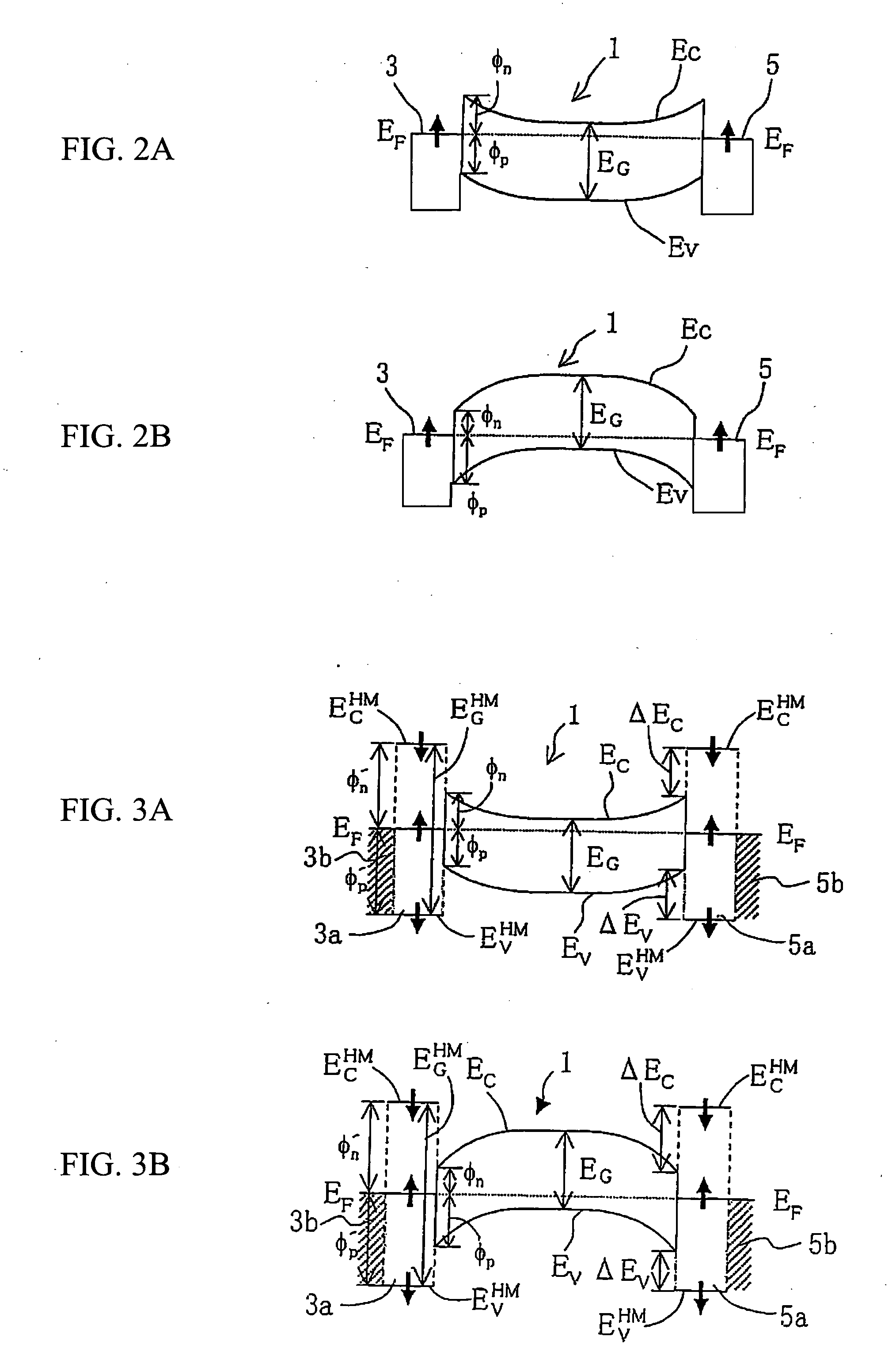Field-effect transistor with spin-dependent transmission characteristics and non-volatile memory using the same
a field-effect transistor and transmission characteristic technology, applied in the field of transistors, can solve the problems of difficult integration of high-density components, and achieve the effects of high speed, large voltage drop, and high precision
- Summary
- Abstract
- Description
- Claims
- Application Information
AI Technical Summary
Benefits of technology
Problems solved by technology
Method used
Image
Examples
first embodiment
[0045]First, a MISFET in accordance with the present invention is described, with reference to the accompanying drawings.
[0046]FIG. 1 is a cross-sectional view of the MISFET in accordance with the first embodiment of the present invention. As shown in FIG. 1, the MISFET of this embodiment includes a MIS structure that is the same as that of a general MISFET (a SiMOSFET, for example) that is formed with a gate electrode 7, a gate insulating film 11, and a non-magnetic semiconductor layer 1, and a source (a ferromagnetic source) 3 and a drain (a ferromagnetic drain) 5 that form a Schottky junction with the non-magnetic semiconductor film 1. The ferromagnetic source and the ferromagnetic drain may be made of: a ferromagnetic metal such as Fe, Ni, Co, Permalloy, CoFe alloy (Co1-xFex), and CoFeB alloy (Co1-x-yFexBy); or a half metal such as Heusler alloy such as Co2MnSi, zinc-blende CrAs, CrSb, and MnAs. Alternatively, the ferromagnetic source and the ferromagnetic drain may be formed wi...
second embodiment
[0053]Next, a MISFET in accordance with the present invention is described, with reference to the accompanying drawings.
[0054]FIG. 3A illustrates a MISFET in accordance with this embodiment, and shows the energy band structure in the vicinity of the channel region of a MISFET of the accumulation n-channel type in the case where a half metal is used for the ferromagnetic source and the ferromagnetic drain. A half metal exhibits a metallic band structure (hereinafter referred to as the “metallic spin band”) for one direction of spins, while exhibiting a semiconductor (or insulating) band structure (hereinafter referred to as the “semiconductor spin band”) for the opposite spins. With a half metal, a half-occupied band for one spin is provided, and a fully-occupied band (a valence band) is separated for the other spin from an empty band (a conduction band) by a band gap. Accordingly, the Fermi energy EF crosses the metallic spin band of one spin, but crosses the band gap with respect t...
third embodiment
[0089]Next, a MISFET in accordance with the present invention is described in conjunction with the accompanying drawings. In a MISFET in accordance with this embodiment, the ferromagnetic source and the ferromagnetic drain form Schottky junctions with a semiconductor layer and a thin metal layer with a height desired for a barrier. A ferromagnetic metal or a half metal is formed on the metal layer. FIG. 12 shows an energy band structure of a MISFET in accordance with this embodiment. As shown in FIG. 12, the MISFET in accordance with this embodiment has ferromagnetic metal members 23 and 25 as a source and a drain, and thin metal layers 23a and 25a introduced at the interfaces between a semiconductor layer and the ferromagnetic metal members 23a and 25a. The thin metal layers 23a and 25a are used to control the barrier height. Schottky junctions of the metal layers 23a and 25a and the semiconductor layer 21 with which a desired barrier height
can be obtained are first formed, and th...
PUM
 Login to View More
Login to View More Abstract
Description
Claims
Application Information
 Login to View More
Login to View More - R&D
- Intellectual Property
- Life Sciences
- Materials
- Tech Scout
- Unparalleled Data Quality
- Higher Quality Content
- 60% Fewer Hallucinations
Browse by: Latest US Patents, China's latest patents, Technical Efficacy Thesaurus, Application Domain, Technology Topic, Popular Technical Reports.
© 2025 PatSnap. All rights reserved.Legal|Privacy policy|Modern Slavery Act Transparency Statement|Sitemap|About US| Contact US: help@patsnap.com



